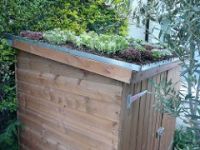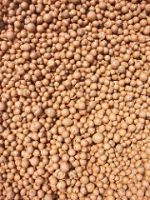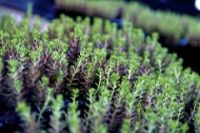How To Create A Green Roof For Your Garden Shed

Preparing the Existing Structure
Before you begin to add a green roof to your garden shed, of course you must first make sure that the shed is sound and in good repair. Of course it is important to check that the existing roof is strong enough to support a lot of extra weight and does not leak. If you are in doubt then check with a structural engineer. A green roof will weigh between 60 and 150kg per m2, potentially more when saturated with rain or covered with snow. If the existing roof is not strong enough then you can sometimes reinforce it with extra wooden supports. Problems may arise if there is too steep a pitch on the roof so this is best for sheds with no more than around a 10 degree slope.
 Creating & Filling the Layers of a Green Roof
Creating & Filling the Layers of a Green Roof
The first thing you will have to consider is making a wooden frame to hold the elements of your green roof in place. It is important to make sure that this frame does not block water from draining from the roof and has holes to allow water into the shed's guttering. The base of the green roof, above the shed's own waterproof roofing, will be a waterproof and root proof membrane – a pond liner is perfect. On top of this membrane you will have your substrate. Regular soil is too heavy – instead, a thin layer of soil mixed with sand is used on top of a mix of expanded clay or recycled brick is mixed with composted green waste, 70% to 30%. This creates a lighter medium in which plants can grow.
 Options For Green Roof Planting
Options For Green Roof Planting
When it comes to choosing what to plant on your green roof, there are a number of options. Common choices are sedums, which can be placed as individual plants or as mats and wildflowers, which can survive in low-nutrient substrates and will offer wildlife-friendly variety. Another option is to simply allow nature to have its way and simply leave the roof to be colonised by any seeds dropped by birds or blown in on the wind.